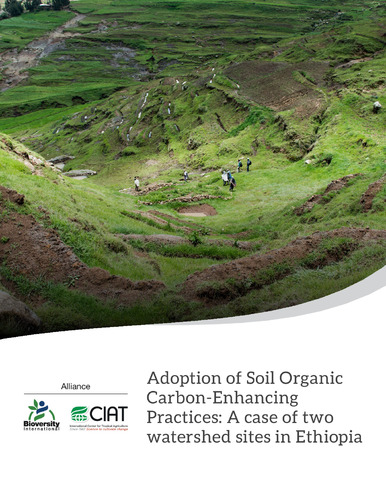Adoption of soil organic carbon-enhancing practices: A case of two watershed sites in Ethiopia.
This study aimed at identifying the factors that determine
the decision to adopt and the intensity of adoption of
soil organic carbon (SOC)-enhancing practices using two
watershed sites in Ethiopia: Yiser (Amhara region) and
Azugashube (Southern region). The study used survey
data collected from 379 sample households drawn from
four Kebele/village administrations at each watershed
site. Multivariate and ordinary least squares regressions
were used to identify the factors that determine the
decision to adopt the SOC-enhancing practices and the
factors that determine the extent of adoption of these
practices, respectively. The study classified these various
practices into three classes: soil and water conservation,
agronomic, and agroforestry SOC-enhancing practices.
We find that the decision to adopt soil and water
conservation practices is negatively related to both the
decision to adopt agronomic and to adopt agroforestry
SOC-enhancing practices. On the contrary, we find
that the decision to adopt agronomic and agroforestry
practices is complementary. The study also identified
diverse agroecological, farming system, institutional, and
household characteristics that determine the decision to
adopt and the intensity of adoption of the three SOCenhancing
practices. Among the different variables, the
study found location as a strong determinant of the type
and intensity of adoption of the SOC practices.

